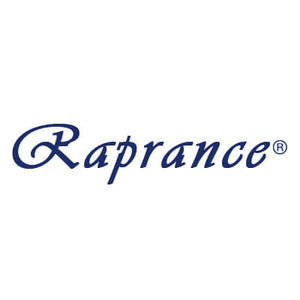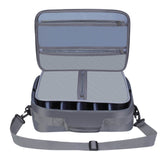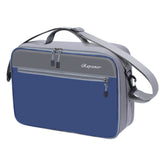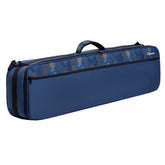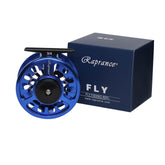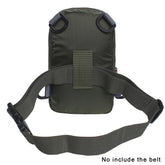Fly Vest: Comparing Top Mesh Fishing Vests from Simms, Orvis, and Patagonia
When it comes to fly fishing, choosing the right vest is essential for a comfortable and successful day on the water. Each brand, whether it’s Simms, Orvis, or Patagonia, offers unique features that can enhance your fishing experience. A well-designed mesh fishing vest allows for ventilation and ease of movement, making it perfect for warm days spent casting lines.

I have found that the right vest not only provides ample storage for tackle and tools but also keeps me organized while on the go. Simms mesh fishing vests, for instance, are known for their durability and thoughtful pocket placements, while Orvis offers styles that balance functionality and comfort. Patagonia vests provide sustainability without compromising on performance, catering to eco-conscious anglers.
Exploring the differences between these vests can help you determine which one suits your needs best. Understanding the advantages of each brand will guide you in making an informed decision, ensuring your time on the water is as enjoyable as possible.
Essential Features of Fly Fishing Vests

When selecting a fly fishing vest, I pay particular attention to the material, design, and comfort. These features are essential for a successful fishing experience, as they affect usability and overall performance.
Material and Build Quality
The material of a fly fishing vest plays a critical role in its durability and functionality. I prefer vests made from nylon ripstop, known for its lightweight and tear-resistant properties. A good quality vest should also have water-resistant coatings, helping to keep my gear dry in damp conditions.
It’s important to note that mesh vests, like those from Simms or Orvis, offer improved ventilation, making them ideal for warmer weather. The stitching and zippers should also be robust, as these components endure daily wear and tear. Investing in a well-constructed vest will ensure it withstands various fishing conditions.
Design and Usability
Effective design in a fly fishing vest significantly enhances usability. I look for multiple pockets to store essential fishing gear, such as flies, tippets, and accessories. Pockets should be strategically placed for easy access while on the water.
Some vests come with specialized organizers or zinger attachments, further increasing efficiency. Features like D-ring attachments for net storage or a dedicated sleeve for tools can streamline my fishing activities. The vest should also include enough space to carry extra layers or insulated vests for cold weather fishing.
Fit and Comfort
Fit and comfort are paramount when I’m on the water for extended periods. A well-fitting vest should allow for a full range of motion without feeling restrictive. I prefer adjustable straps to customize the fit, ensuring the vest remains secure without sagging.
Breathable materials can help reduce discomfort during warm days. Additionally, the weight of the vest should be balanced to prevent fatigue. With the right fit, I can focus on my fishing techniques rather than readjusting my gear. An ergonomic design supports movement, allowing me to cast and retrieve effortlessly.
Top Brands and Models
When selecting a fly fishing vest, several brands stand out for their quality and functionality. These brands offer specific models that cater to the needs of various anglers. I find it important to consider the unique features each brand provides to enhance the fishing experience.
Simms Fishing Vests
Simms is a renowned name in the fishing industry. Their vests are designed for durability and practicality. The Simms G3 Guide Vest is a popular choice among serious anglers. It features multiple pockets for organization and mesh panels for breathability. The adjustable straps allow for a secure fit, even with gear attached.
Simms vests often incorporate high-quality materials, ensuring they withstand wear and tear. Additionally, they provide ample storage for tackle and personal items, making them ideal for long fishing trips.
Orvis Fishing Vests
Orvis offers vests that combine functionality with style. The Orvis Clearwater Fishing Vest is particularly notable. With numerous pockets, it provides excellent storage for tools, flies, and other essentials. The lightweight design enhances comfort without sacrificing durability.
Many Orvis vests feature adjustable features, ensuring a customizable fit. The breathable fabric enhances comfort in warm weather, making it suitable for various fishing conditions.
Patagonia Fishing Vests
Patagonia is well-known for its commitment to sustainability. Their fishing vests, such as those in the Patagonia fly fishing line, offer a blend of functionality and eco-conscious materials. The vests are designed to offer maximum comfort and utility.
Patagonia vests often include adjustable straps and plenty of pockets. The materials used are durable and designed for various weather conditions, providing versatility for anglers. Additionally, Patagonia’s focus on environmentally friendly practices resonates with many outdoor enthusiasts.
Fishpond Innovative Vests
Fishpond is recognized for its innovative designs and commitment to sustainability. Their vests often feature unique functionalities suited for modern anglers. For example, the Fishpond vest typically includes integrated tools and attachment points for accessories.
The organization of their vests is exceptional, with numerous pockets designed to keep gear secure and easily accessible. Fishpond's use of recycled materials also stands out, making their vests not just practical but environmentally responsible. The focus on innovation ensures their products meet the diverse needs of anglers.
Versatility and Storage Solutions

When selecting a fly fishing vest, versatility and storage capacity are crucial. Different styles, such as vests and packs, offer unique benefits tailored to specific fishing needs.
Comparing Vest and Pack Options
In my experience, vests provide easy access to essentials like flies, tippets, and tools. They often feature multiple pockets in various sizes, making organization straightforward.
Here’s a quick comparison:
| Feature | Vests | Packs |
|---|---|---|
| Accessibility | High | Moderate |
| Capacity | Moderate | High |
| Weight Distribution | Evenly distributed | Depends on pack type |
| Comfort Level | Generally comfortable | Varies by design |
Fishing packs, such as chest packs or sling packs, offer larger storage but may require more time to access items. Choosing between them depends on personal preference and the specific fishing scenario.
Waterproofing and Protection
Waterproofing is an essential feature for any fly fishing gear. I always look for vests and packs that use durable materials to protect my equipment from moisture.
Many modern fishing packs come with waterproof capabilities, ensuring my gear stays dry during unexpected weather. Some notable options include:
- Waterproof vests: Often include treated fabric that repels water.
- Waterproof packs: Designed with sealed seams and waterproof zippers, ensuring maximum protection.
Investing in waterproof gear is crucial for maintaining the integrity of flies and accessories. By prioritizing both versatility and waterproofing, I ensure a successful and enjoyable fishing experience.
Maintaining Your Fishing Vest
Proper maintenance of my fishing vest is essential for ensuring its longevity and functionality. By focusing on cleaning and repair, I can keep my gear in optimal condition for many fishing trips to come.
Cleaning and Care
I clean my fishing vest regularly to prevent dirt and residue buildup. For vests made from mesh or nylon ripstop, I recommend a simple method:
- Initial Rinse: After each outing, I rinse it with fresh water to remove any saltwater or mud.
- Gentle Wash: I use mild soap and a soft brush to scrub any stained areas. Harsh chemicals can damage the material.
- Air Dry: Instead of machine drying, I air dry my vest to avoid shrinking or damaging the fabric.
In addition, I pay special attention to pockets and zippers, ensuring they are free from debris. Keeping the vest clean not only preserves its appearance but also prevents the growth of mildew.
Durability and Repair
Fishing vests endure wear and tear over time, especially those that see frequent water exposure. My focus on durability involves:
- Inspecting Material: I regularly check the fabric for any signs of fraying or tears. Nylon ripstop is generally durable, but I remain vigilant.
- Zipper Maintenance: I apply lubricant to zippers to maintain their function, preventing sticking or breakage.
- Sewing Minor Repairs: For small rips, I use a needle and durable thread to patch them up before they worsen.
If a section of the vest shows significant damage, I consider patching it with a matching fabric. This method extends the life of my vest while keeping it handy for fishing adventures.
